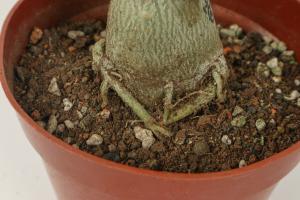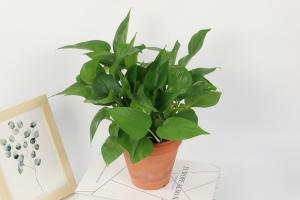Do Snake Plants Like to be Pot Bound?
Snake plants, also known as Sansevieria, are one of the easiest indoor plants to care for. However, there is some debate among plant lovers about whether or not they like to be pot-bound. In this article, we will explore the myths and facts surrounding snake plants and being pot-bound.
What does being pot-bound mean?
Being pot-bound simply means that the roots of the plant have filled the container entirely, leaving no room for growth. The roots can become tightly packed, causing the soil to become compacted and making it difficult for water to penetrate. In some cases, the roots can even start to spiral around the inside of the pot, creating a tangle that can be difficult to unravel.
Do Snake Plants like to be pot-bound?
Snake plants are known for their ability to thrive in a variety of conditions, including being pot-bound. While they can handle being cramped in a tight container, it’s important to remember that they still need proper care and attention.
Snake plants are capable of adapting to their environment, including the size of their container. They can go for years without being repotted if cared for properly. However, if the plant starts showing signs of distress, such as stunted growth or yellowing leaves, it may be time to repot the plant.
Benefits of being pot-bound
While being pot-bound can have negative consequences for some plants, there are actually some benefits for snake plants. When snake plants are pot-bound, they tend to produce more leaves and grow taller. This is because the plant is putting its energy into vertical growth instead of root development.
Additionally, being pot-bound can also help regulate the size of the plant. Snake plants are known for their tendency to grow out of control, and being pot-bound can help keep their growth in check.
How to care for a pot-bound Snake Plant
To care for a pot-bound snake plant, it’s important to make sure that it’s getting enough water and light. While they can handle being cramped, they still need proper care and attention.
Water your snake plant thoroughly, making sure that the water is able to penetrate the compacted soil. You may need to poke some holes in the soil to help the water flow through.
Place your snake plant in a bright, indirect light location. While they can tolerate low light conditions, they will grow faster and healthier in brighter light.
If the plant is showing signs of distress, such as stunted growth or yellowing leaves, it may be time to repot the plant. When repotting, choose a container that is slightly larger than the current one and use a well-draining soil mix.
Conclusion
Overall, snake plants can handle being pot-bound and tend to thrive in these conditions. However, it’s important to remember that they still need proper care and attention. If your snake plant is showing signs of distress, it may be time to repot the plant. With proper care, your pot-bound snake plant can continue to thrive and beautify your home for years to come.

 how many times do yo...
how many times do yo... how many planted tre...
how many planted tre... how many pine trees ...
how many pine trees ... how many pecan trees...
how many pecan trees... how many plants comp...
how many plants comp... how many plants can ...
how many plants can ... how many plants and ...
how many plants and ... how many pepper plan...
how many pepper plan...





























